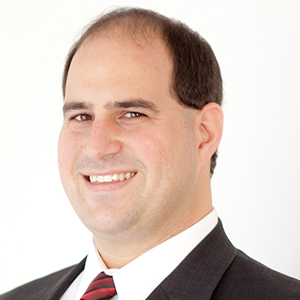Who is My Lawyer?
 This topic arises frequently in an office-sharing situation, and the more important question is, do your clients know and understand who their attorneys are – and who they are not? While it may be tempting to try and “join forces” for advertising purposes, if you are not a law firm, then you should not give the impression of being one. The considerations below use the hypothetical situation of two solo attorneys in an office sharing environment, but would apply to any firm in an office sharing situation with other attorneys.
This topic arises frequently in an office-sharing situation, and the more important question is, do your clients know and understand who their attorneys are – and who they are not? While it may be tempting to try and “join forces” for advertising purposes, if you are not a law firm, then you should not give the impression of being one. The considerations below use the hypothetical situation of two solo attorneys in an office sharing environment, but would apply to any firm in an office sharing situation with other attorneys.
- Who is the attorney? This question becomes key from a privilege standpoint and a liability standpoint, and will be repeated in various forms in some of the other considerations below.
- Engagement Letters - At the beginning of any relationship, it needs to be clear who the attorney is…and it may also be necessary to state who is/are not the attorney(s) (or at least a statement that the client understands this is an office-sharing environment and only the named attorney represents them and you are not affiliated with any of the other attorneys). It is very important to have a well-drafted engagement letter setting forth who is being hired and the scope of the representation.
- Signage – It needs to be clear who is who in the space. If you are not a law firm, there should not be a sign saying “Smith and Jones Attorneys at Law” but rather one saying “Smith Attorney at Law” and another saying “Jones Attorney at Law”.
- Phones – Likewise, the phone system should differentiate between attorneys. It is common for a central phone to be answered “Law Offices” and then directed to the appropriate attorney’s office; however, even that may pose problems. A better alternative is to have a phone system that recognizes the unique numbers for each attorney and prompts a central receptionist to answer with the appropriate firm’s greeting. Again, if it is not a law firm of multiple attorneys, then the phone system and answering services should not say “Smith and Jones Attorneys at Law”. (See: CPR 265)
- Letterhead – Same as above, keep everything separate, do not leave room for confusion. (See: Comment 4 to Rule 7.5)
- Filing systems – all files should be kept separate and secure under the care/custody/control of the appropriate attorney, not in a common area where confidences could be compromised. This applies to computers and electronic databases, backups, servers, etc. You need to ensure your clients’ information is kept separate and secure.
- Shared staff – This can get very tricky. While it is usually less of a problem for a receptionist who does not deal with confidential information, so long as they are properly trained in the phone system and how to answer and direct calls, it gets a lot trickier in the case of a paralegal, legal assistant, or secretary. There are three major areas of concern: (a) client confidentiality as described above, (b) possibility of confusion as to what attorney is working on a client’s matter if the client sees the same staff member working for both attorneys, and (c) payroll/IRS issues involving compensation, hours, and taxes. The best option is to be aware of the pitfalls in sharing staff, educate staff (and clients), and be clear in client communications. (See: CPR 274)
- Sharing information between attorneys – It is so easy to discuss cases, fact scenarios, points of law, etc., especially with a friend or someone with whom you are sharing an office. However, if they are a separate attorney/firm, then doing so could be a breach of confidentiality if the information falls within Rule 1.6 and is not otherwise allowed to be disclosed. Of course you may always bring in the other attorney after a conflicts check and after informed written consent from your client as per the rules of professional conduct on associating with another attorney on a case and division of fees (Rule 1.5); however, you may not discuss any other specific cases at any time with one another.
- Attorney contact - Keeping with the “who is the attorney” idea, it would be inadvisable to “cover” each other’s offices while the other is away, in court, with another client, etc. “Covering” for another attorney (a) requires a conflicts check per the ethics opinions (See e.g. 99 FEO 12), and (b) very easily could give the client the impression that you are the same firm.
- Bank accounts, separate accounts for separate attorneys/firms. There should not be a “Smith and Jones” Trust Account or Operating Account.
Remember, it is not your impression of the relationship that counts, but rather what your clients see as the relationship. If you going to share office space, it is very important to ensure the clients know who their attorney is and that any other attorneys sharing space in the office are separate and do not represent them. Otherwise, if the client sues both attorneys, there may be a coverage issue for the attorney who was not representing them.
If you are in an office sharing environment where there are non-lawyers operating other businesses as well, see CPR 213 for some considerations (e.g. separate phone systems, security of files, etc.).
So, do your clients know who their attorneys are?




